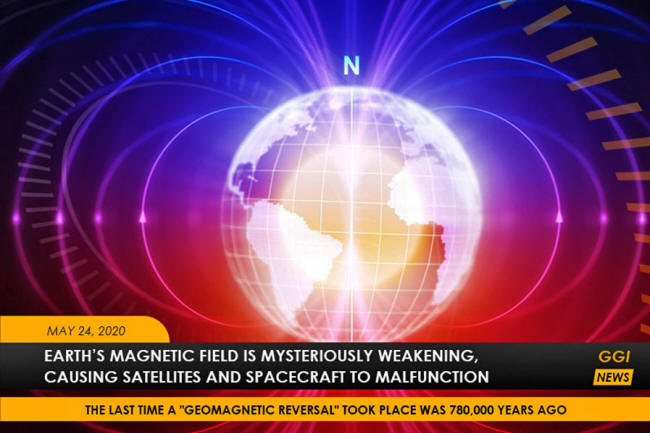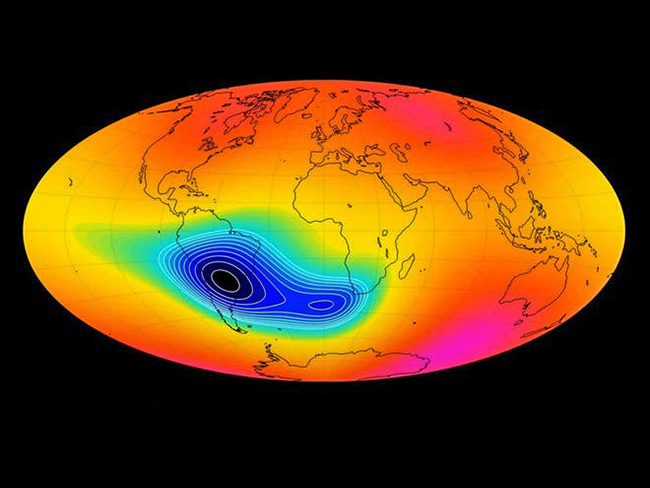|
The South Atlantic Anomaly has been captured by the Swarm satellite constellation (Division of Geomagnetism, DTU Space).
The Earth's magnetic field is weakening between Africa and South America, disrupting satellites and spacecrafts.
Scientists studying the phenomenon known as the South Atlantic Anomaly (SAA), say the Earth's magnetic field is about to reverse.
NASA has reported that modern laptops have crashed when Space Shuttle flights passed through the anomaly.
South Atlantic Anomaly is thought to be the reason for the failures of the Globalstar network's satellites in 2007.
The last time a "geomagnetic reversal" took place was 780,000 years ago...
South Atlantic Anomaly - How Earth's Magnetic Field Is Crashing Laptops & Disrupting Satellites
Using data gathered by the European Space Agency's (ESA) Swarm constellation of satellites, researchers noted that the area of the anomaly dropped in strength by more than 8 per cent between 1970 and 2020.
One possibility, according to the ESA, is that,
The last time a "geomagnetic reversal" took place was 780,000 years ago, with some scientists claiming that the next one is long overdue.
Typically, such events take place every 250,000 years.
The South Atlantic Anomaly has been captured by the Swarm satellite constellation (Division of Geomagnetism, DTU Space)
The repercussions of such an event could be significant, as the Earth's magnetic field plays an important role in protecting the planet from solar winds and harmful cosmic radiation.
These orbits take satellites through the anomaly periodically, exposing them to several minutes of strong radiation, caused by the trapped protons in the inner Van Allen belt.
A cross-sectional view of the Van Allen radiation belts, noting the point where the South Atlantic Anomaly occurs.
The International Space Station, orbiting with an inclination of 51.6°, requires extra shielding to deal with this problem.
The Hubble Space Telescope does not take observations while passing through the SAA.
Astronauts are also affected by this region, which is said to be the cause of peculiar "shooting stars" (phosphenes) seen in the visual field of astronauts, an effect termed the cosmic ray visual phenomena.
Passing through the South Atlantic Anomaly is thought to be the reason for the failures of the Globalstar network's satellites in 2007.
The PAMELA experiment, while passing through the SAA, detected antiproton levels that were orders of magnitude higher than expected.
This suggests the Van Allen belt confines antiparticles produced by the interaction of the Earth's upper atmosphere with cosmic rays. NASA has reported that modern laptops have crashed when Space Shuttle flights passed through the anomaly.
In October 2012, the SpaceX CRS-1 Dragon spacecraft attached to the International Space Station experienced a transient problem as it passed through the anomaly.
The SAA is believed to have started a series of events leading to the destruction of the Hitomi, Japan's most powerful X-ray observatory.
The anomaly transiently disabled a direction-finding mechanism, causing the satellite to rely solely on gyroscopes that were not working properly, after which it spun itself apart.
|




